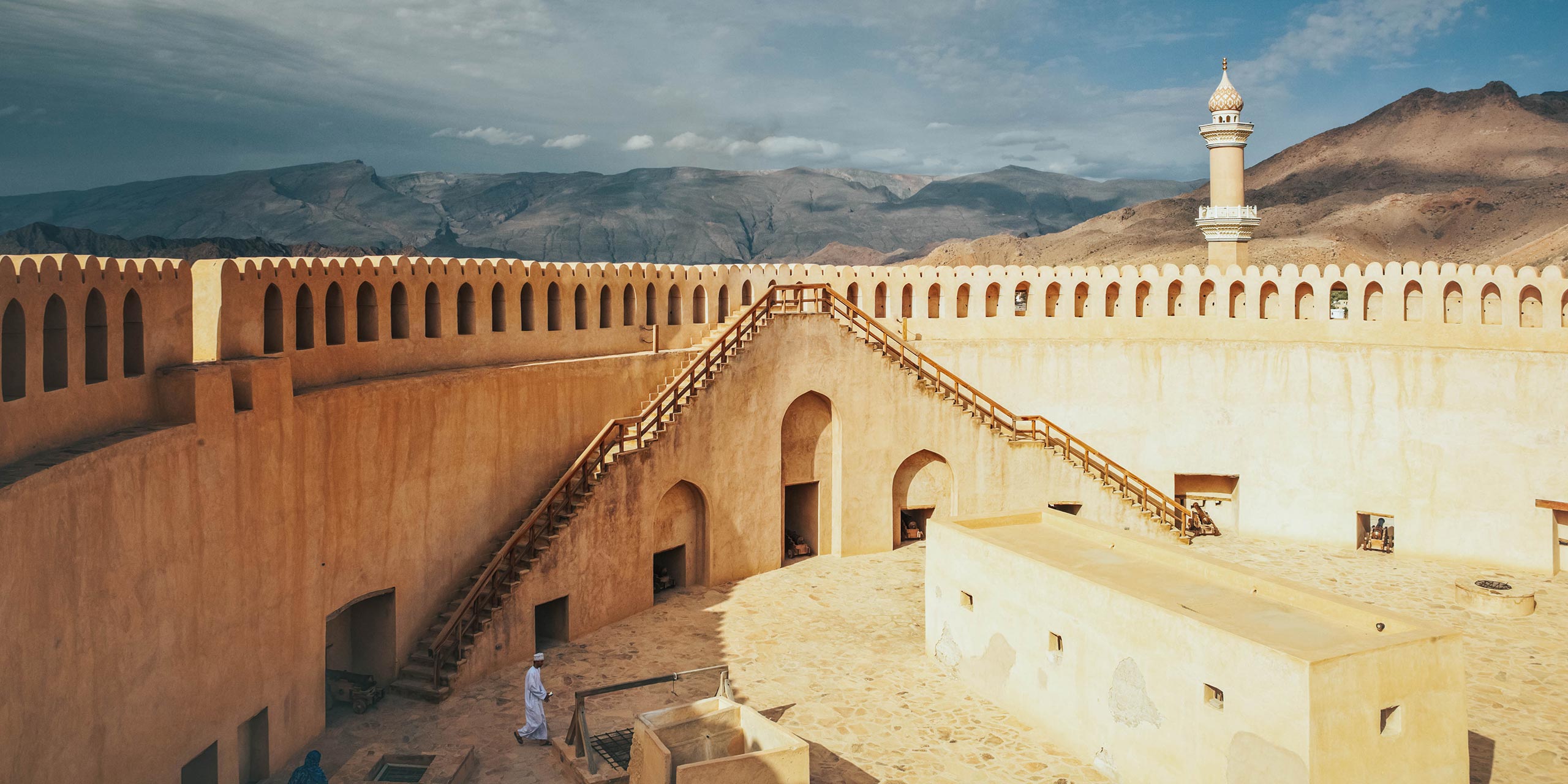
It is approaching sundown as I close in on Nizwa. With the last shards of light draining from the day, the shadows lengthen over the tarmac, the towering stony peaks of the Hajar Mountains seeming to encroach from either side of the highway.
As my vehicle crests another summit, I catch my first glimpse of the city: one of the oldest in Oman and a hub for trade and religious discourse for millennia.
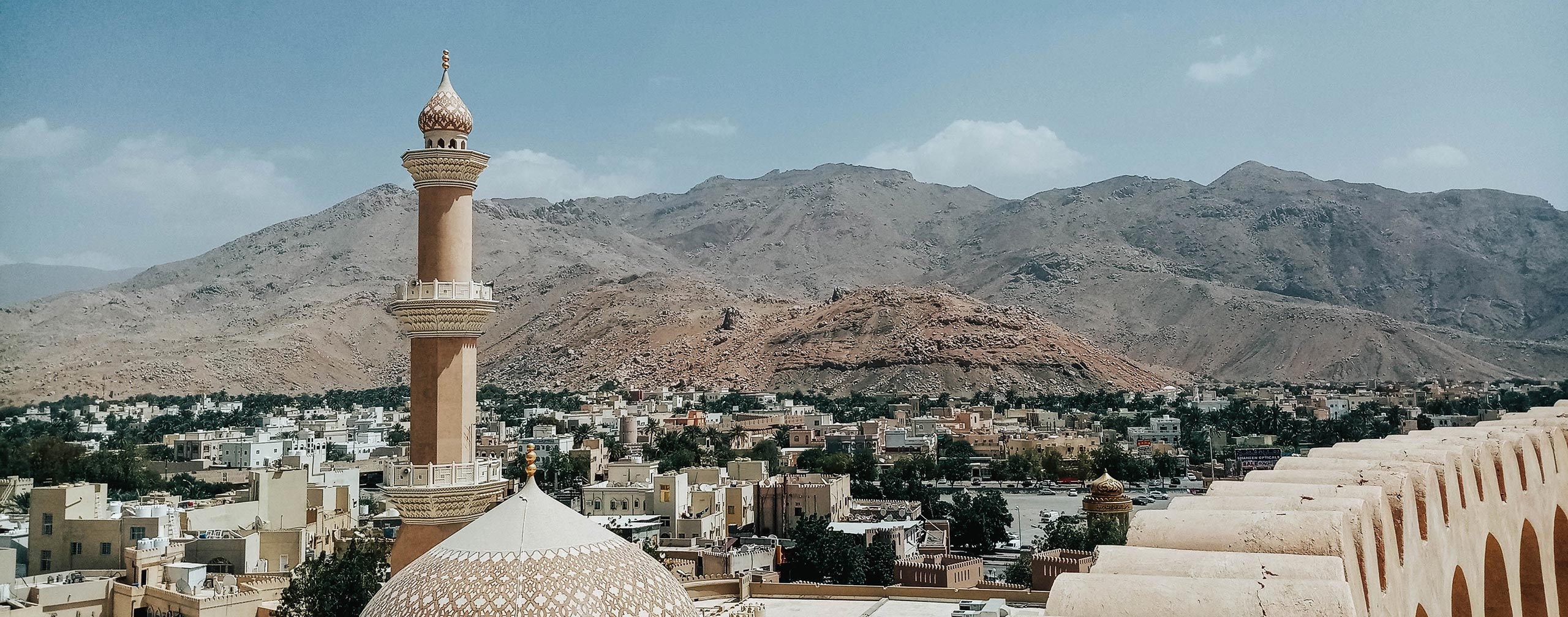
A procession of date palms is halted by a double-arched gateway that marks the boundary of the town. Dominating the scene, meanwhile, is the town’s iconic fort with its 40-metre-tall round tower – a virtually impregnable stronghold that has protected local powers from invasion since the 17th Century.
I stop by the side of the road to take in the tableaux: a classic snapshot of Old Arabia. In fact, if it wasn’t for the occasional gas guzzler whistling by on the road, I feel I could transport myself back a century or so to a period when pioneers such as Sir Percy Cox were staking out what were then unknown quantities to most foreigners on behalf of Queen and country.
Cox, as I learned a couple of days back at the Chedi Muscat while boning up on my local history in the library at the resort’s sumptuous Club Lounge, was something of a legend in Oman.
Heritage sights such as Nizwa and its fort are among the most stirring encapsulations of what makes Oman a special place.
Imad Al Balushi
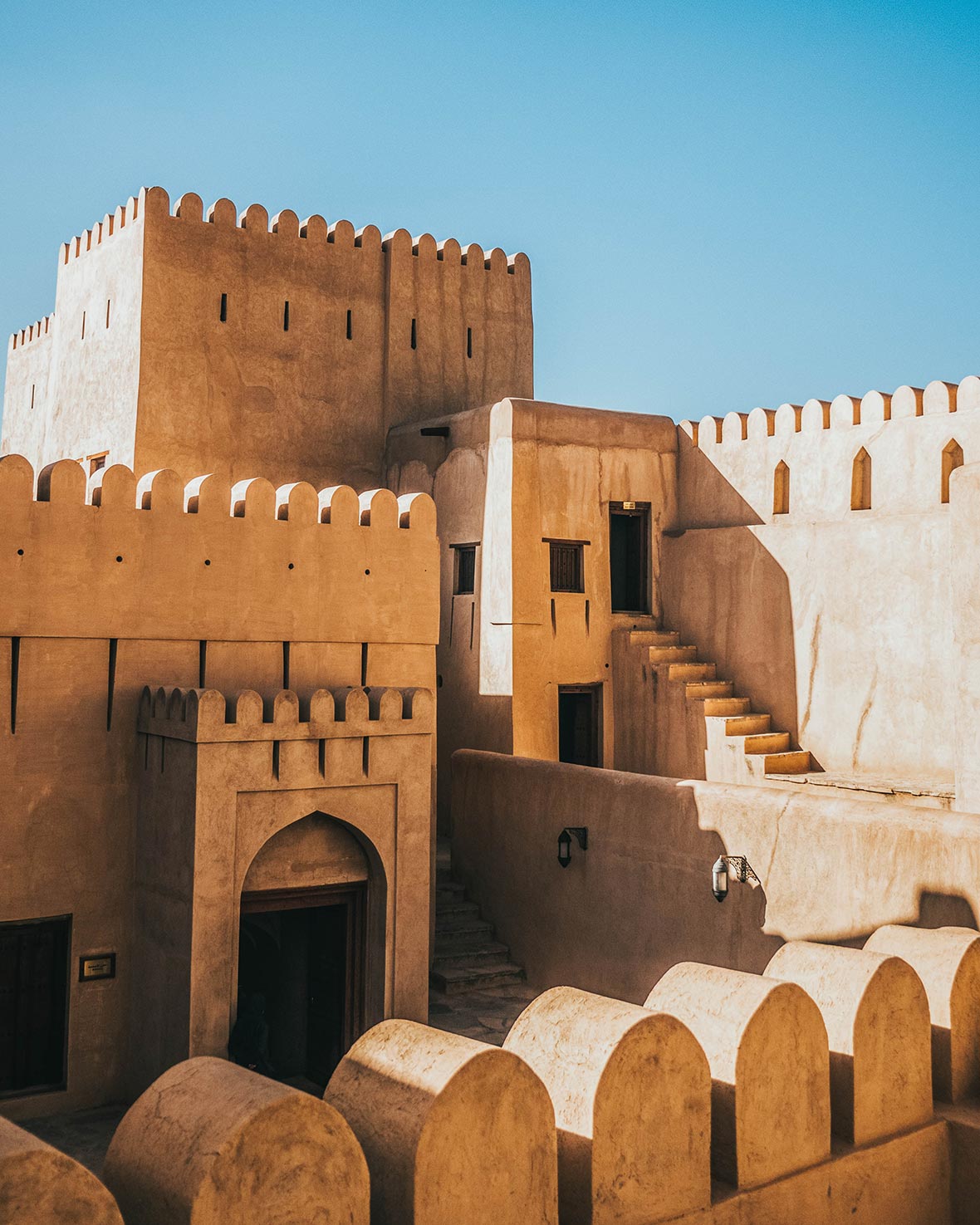
Others like TE Lawrence (of Arabia) and Evelyn Baring, 1st Earl of Cromer, the long-term imperial administrator of Egypt, arguably achieved greater fame, but Cox is viewed by many as a figure of equal significance to his colonial-era contemporaries. Therefore, it was with no little fascination that I thumbed through the pages of his book Some Excursions in Oman – a thrilling travelogue that provided at least part of the spark for my own journey to Nizwa.
“Heritage sights such as Nizwa and its fort are among the most stirring encapsulations of what makes Oman a special place,” says Imad Al Balushi, my guide. “Of course, the country has modernised significantly over the last century or so. But visiting destinations like Nizwa, you can still get a real feel for the past; how previous generations of Omanis lived and how early European explorers and administrators experienced things.”
When the Royal Geographical Society of London published Some Excursions in Oman in 1925, it was a vivid reflection of a life well led.

By that time, Cox was winding down a glittering career as a colonial administrator in the Middle East: a rip-roaring Boy’s Own adventure that had seen him help put down revolts from British Somaliland (the north-western portion of present-day Somalia) to Baghdad and play a prominent role in the shaping of the current Middle East.
His recollections of his period as Political Agent and consul at Muscat at the turn of the 20th Century are then but a minute portion of the voluminous epic that was his life-story. It may be little more than a snapshot, but what a sliver it is.
In the book, Cox ponders the treacherous crossing of the Rub’ al Khalil – the largest contiguous sand desert in the world, better known as The Empty Quarter – by means of camel train or, even more outlandishly, hot air balloon.
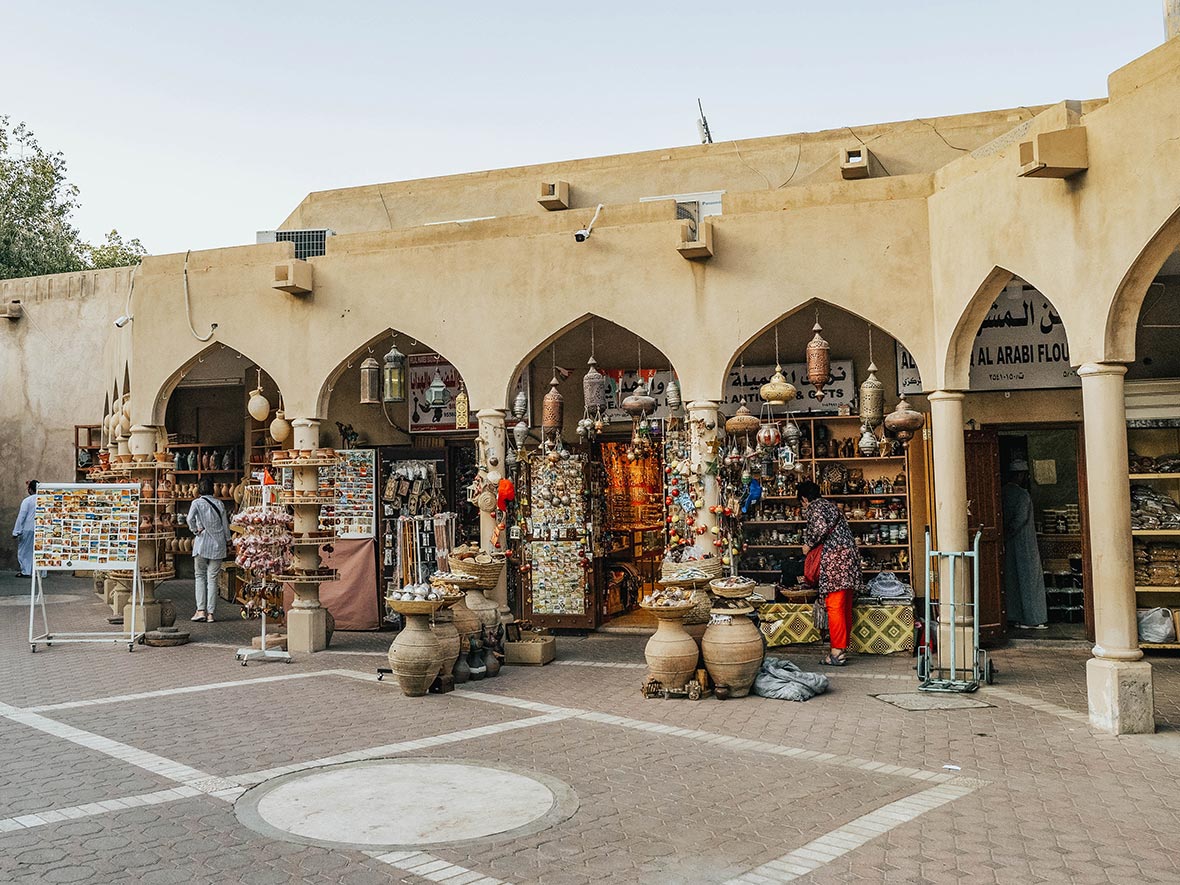
He also recounts the capture by the Portuguese of Omani dhows loading up with slaves in East Africa, a shocking reminder of the trade in human flesh that was still very much a fact of life in Oman in the early years of the 20th Century.
Equally compelling are Cox’s memories of visiting Nizwa. Today, the town is the second-biggest tourist destination in Oman. But in Cox’s era, the place – which was the seat of factional imams until the 1950s, and has long been regarded as conservative, religious centre in the nation – veered much closer to the bone.
Cox recounts a happy experience: a time of rest following days of hard travel over unforgiving terrain. Almost casually, however, he drops in the fact that the friendly wali (governor) who greets him with strong Arabic coffee and dates and shows him around the fort and the bazaar has only just regained control of the town for his family by murdering an impudent usurper.
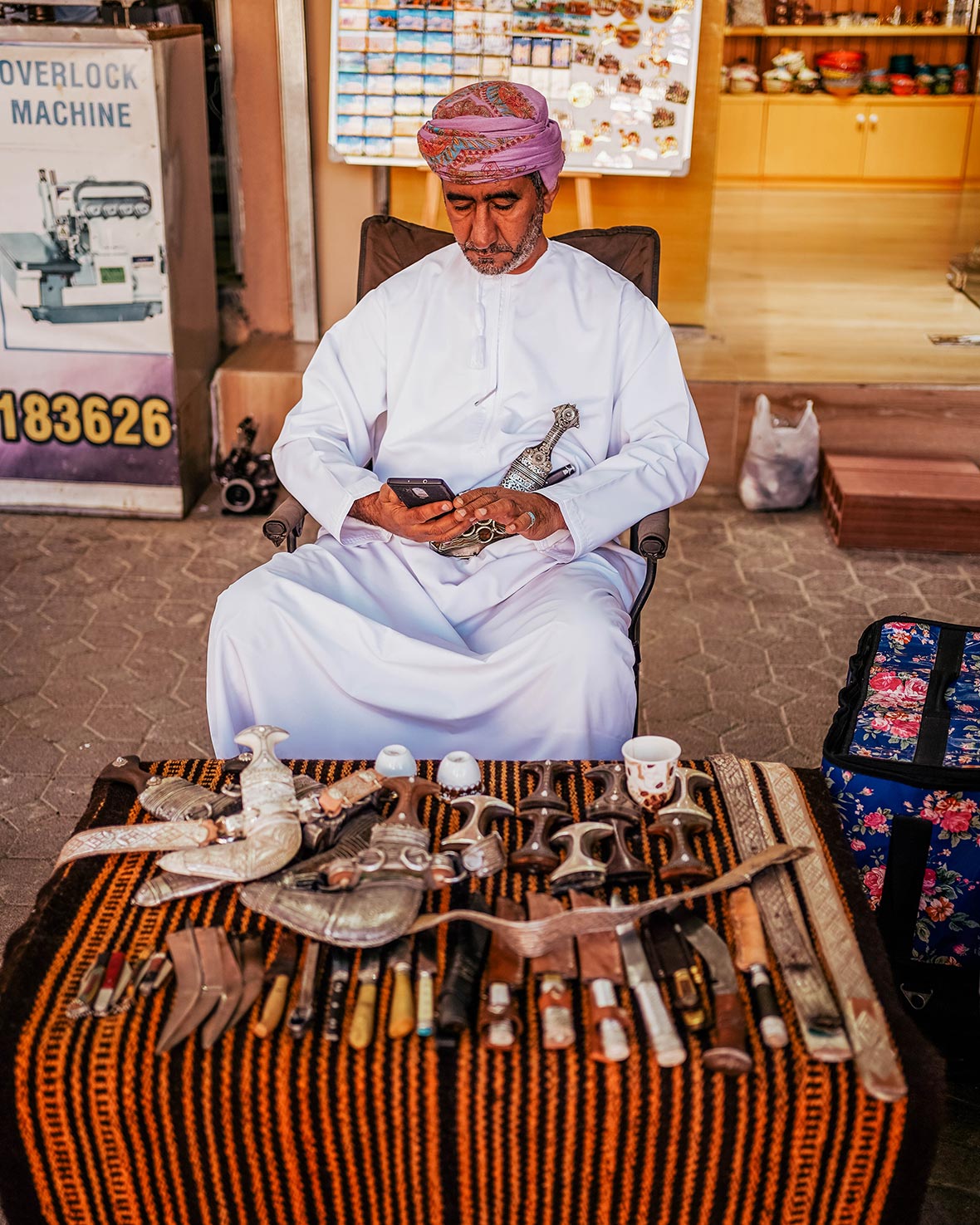
Such contrasts between Arabian hospitality and fierce pride and often bloody conflict are one of the most fascinating aspects of following in Cox’s footsteps as a modern traveller.
These days, of course, Oman is one of the most settled, peaceful destinations in the Middle East. And there’s little suggestion of any drama as I plot my way around the sleepy streets of modern-day Nizwa. In fact, the only sign of animation at the central souk where vendors purvey Omani sweets, antique weaponry, and jewellery is a lively discussion between a group of old men hovering over a backgammon board.
Yet while the town itself errs towards the somnolent, it doesn’t take a great leap of imagination to visualise more turbulent times – not least at the enormous fort. It took Imam Sultan Bin Saif Al Ya’rubi – the local strongman who commissioned the fort — around 12 years to construct his mighty bulwark. And the stolid structure is a reminder of how coveted Nizwa’s wealth and strategic location has been throughout Oman’s long history, and the lengths its rulers have gone to defend it.
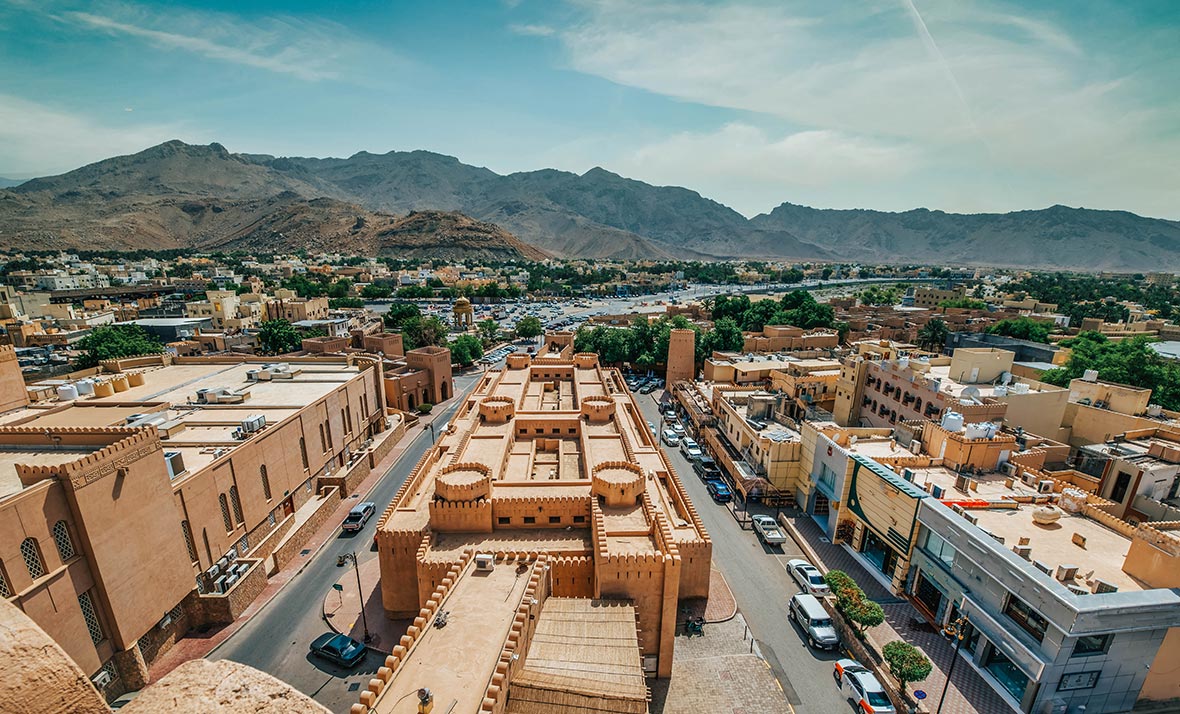
As I climb higher, I spy hundreds of openings dotted along the upper walls of the fort. “Those were used for defenders of the fort to pour boiling hot oil or honey onto the heads of invading forces 25 metres below,” Imad tells me. Today, there are no marauding hordes laying siege to the castle – just a few camera-toting tourists browsing the souvenirs in the fort’s museum/shop.
With all at peace, I take in the view from the top of the tower. In the clear, morning light, the towering summits of Jabal Akhdar, the country’s highest point, hove into focus. To the south, the highway ribbons towards the town of Adam, the last green oasis before thousands of miles of endless desert.
Oman may be a less colourful place than in Cox’s era, but the timeless allure of destinations like Nizwa and the elemental power of the landscapes that surround them means there are still chapters for the modern adventurer to write.
